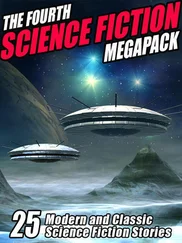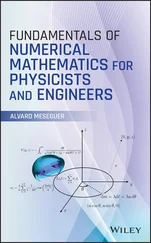William Garnett - Heroes of Science - Physicists
Здесь есть возможность читать онлайн «William Garnett - Heroes of Science - Physicists» — ознакомительный отрывок электронной книги совершенно бесплатно, а после прочтения отрывка купить полную версию. В некоторых случаях можно слушать аудио, скачать через торрент в формате fb2 и присутствует краткое содержание. Жанр: foreign_antique, foreign_prose, на английском языке. Описание произведения, (предисловие) а так же отзывы посетителей доступны на портале библиотеки ЛибКат.
- Название:Heroes of Science: Physicists
- Автор:
- Жанр:
- Год:неизвестен
- ISBN:нет данных
- Рейтинг книги:5 / 5. Голосов: 1
-
Избранное:Добавить в избранное
- Отзывы:
-
Ваша оценка:
- 100
- 1
- 2
- 3
- 4
- 5
Heroes of Science: Physicists: краткое содержание, описание и аннотация
Предлагаем к чтению аннотацию, описание, краткое содержание или предисловие (зависит от того, что написал сам автор книги «Heroes of Science: Physicists»). Если вы не нашли необходимую информацию о книге — напишите в комментариях, мы постараемся отыскать её.
Heroes of Science: Physicists — читать онлайн ознакомительный отрывок
Ниже представлен текст книги, разбитый по страницам. Система сохранения места последней прочитанной страницы, позволяет с удобством читать онлайн бесплатно книгу «Heroes of Science: Physicists», без необходимости каждый раз заново искать на чём Вы остановились. Поставьте закладку, и сможете в любой момент перейти на страницу, на которой закончили чтение.
Интервал:
Закладка:
William Garnett
Heroes of Science: Physicists
PREFACE
The following pages claim no originality, and no merits beyond that of bringing within reach of every boy and girl material which would otherwise be available only to those who had extensive libraries at their command, and much time at their disposal. In the schools and colleges in which the principles of physical science are well taught, the history of the discoveries whereby those principles have been established has been too much neglected. The series to which the present volume belongs is intended, in some measure, to meet this deficiency.
A complete history of physical science would, if it could be written, form a library of considerable dimensions. The following pages deal only with the biographies of a few distinguished men, who, by birth, were British subjects, and incidental allusions only are made to living philosophers; but, notwithstanding these narrow restrictions, the foundations of the Royal Society of London, of the American Philosophical Society, of the great Library of Pennsylvania, and of the Royal Institution, are events, some account of which comes within the compass of the volume. The gradual development of our knowledge of electricity, of the mechanical theory of heat, and of the undulatory theory of optics, will be found delineated in the biographies selected, though no continuous history is traced in the case of any one of these branches of physics.
The sources from which the matter contained in the following pages has been derived have been, in addition to the published works of the subjects of the several sketches, the following: —
"The Encyclopædia Britannica."
"Memoir of the Honourable Robert Boyle," by Thomas Birch, M.A., prefixed to the folio edition of his works, which was published in London in 1743.
"Life of Benjamin Franklin," from his own writings, by John Bigelow.
Dr. G. Wilson's "Life of Cavendish," which forms the first volume of the publications of the Cavendish Society; and the "Electrical Researches of the Hon. Henry Cavendish, F.R.S.," edited by the late Professor James Clerk Maxwell.
"The Life of Sir Benjamin Thompson, Count Rumford," by George E. Ellis, published by the American Academy of Arts and Sciences, in connection with the complete edition of his works.
"Memoir of Thomas Young," by the late Dean Peacock.
Dr. Bence Jones's "Life of Faraday;" and Professor Tyndall's "Faraday as a Discoverer."
"Life of James Clerk Maxwell," by Professor Lewis Campbell and William Garnett.
It is hoped that the perusal of the following sketches may prove as instructive to the reader as their preparation has been to the writer.
WM. GARNETT.Newcastle-upon-Tyne,
December, 1885 .
INTRODUCTION
The dawn of true ideas respecting mechanics has been described in the volume of this series devoted to astronomers. At the time when the first of the following biographies opens there were a few men who held sound views respecting the laws of motion and the principles of hydrostatics. Considerable advance had been made in the subject of geometrical optics; the rectilinear propagation of light and the laws of reflection having been known to the Greeks and Arabians, whilst Willebrod Snellius, Professor of Mathematics at Leyden, had correctly enunciated the laws of refraction very early in the seventeenth century. Pliny mentions the action of a sphere of rock-crystal and of a glass globe filled with water in bringing light to a focus. Roger Bacon used segments of a glass sphere as lenses; and in the eleventh century Alhazen made many measurements of the angles of incidence and refraction, though he did not succeed in discovering the law. Huyghens developed to a great extent the undulatory theory; while Newton at the same time made great contributions to the subject of geometrical optics, decomposed white light by means of a prism, investigated the colours of thin plates, and some cases of diffraction, and speculated on the nature, properties, and functions of the ether, which was equally necessary to the corpuscular as to the undulatory theory of light, if any of the phenomena of interference were to be explained. The velocity of light was first measured by Roemer, in 1676. The camera obscura was invented by Baptista Porta, a wealthy Neapolitan, in 1560; and Kepler explained the action of the eye as an optical instrument, in 1604. Antonio de Dominis, Archbishop of Spalatro, discovered the fringe of colours produced by sunlight once reflected from the interior of a globe of water, and this led, in Newton's hands, to the complete explanation of the rainbow.
The germ of the mechanical theory of heat is to be found in the writings of Lord Bacon. The first thermometers which were blown in glass with a bulb and tube hermetically sealed, were made by a craftsman in Florence, in the time of Torricelli. The graduations on these thermometers were made by attaching little beads of coloured glass to their stems, and they were carried about Europe by members of the Florentine Academy, in order to learn whether ice melted at the same temperature in all latitudes.
In electricity the attraction of light bodies by amber when rubbed, was known at least six hundred years before the Christian era, and the shocks of the torpedo were described by Pliny and by Aristotle; but the phenomena were not associated in men's minds until recent times. Dr. Gilbert, of Colchester, Physician to Queen Elizabeth, may be regarded as the founder of the modern science. He distinguished two classes of bodies, viz. electrics, or those which would attract light bodies when rubbed; and non-electrics, or those which could not be so excited. The first electric machine was constructed by Otto von Guericke, the inventor of the Magdeburg hemispheres, who mounted a ball of sulphur so that it could be made rapidly to rotate while it was excited by the friction of the hand. He observed the repulsion which generally follows the attraction of a light body by an electrified object after the two have come in contact. He also noticed that certain bodies placed near to electrified bodies possessed similar powers of attraction to those of the electrified bodies themselves. Newton replaced the sulphur globe of Otto von Guericke by a globe of glass. Stephen Gray discovered the conduction of electricity, in 1729, when he succeeded in transmitting a charge to a distance of 886 feet along a pack-thread suspended by silk strings so as to insulate it from the earth. Desaguliers showed that Gilbert's "electrics" were simply those bodies which could not conduct electricity, while all conductors were "non-electrics;" and Dufay showed that all bodies could be electrified by friction if supported on insulating stands. He also showed that there were two kinds of electrification, and called one vitreous , the other resinous . Gray, Hawksbee, and Dr. Wall all noticed the similarity between lightning and the electric discharge. The prime conductor was first added to the electric machine by Boze, of Wittenberg; and Winkler, of Leipsic, employed a cushion instead of the hand to produce friction against the glass. The accumulation of electricity in the Leyden jar was discovered accidentally by Cuneus, a pupil of Muschenbroeck, of Leyden, about 1745, while attempting to electrify water in a bottle held in his hand. A nail passed through the cork, by which the electricity was communicated to the water. On touching the nail after charging the water, he received the shock of the Leyden jar. This brings the history of electrical discovery down to the time of Franklin.
ROBERT BOYLE
Robert Boyle was descended from a family who, in Saxon times, held land in the county of Hereford, and whose name in the Doomsday Book is written Biuvile. His father was Richard Boyle, Earl of Cork, to whom the fortunes of the family were largely due. Richard Boyle was born in the city of Canterbury, October 3, 1566. He was educated at Bene't College (now Corpus Christi College), Cambridge, and afterwards became a member of the Middle Temple. Finding his means insufficient for the prosecution of his legal studies, he determined to seek his fortune abroad. In 1595 he married, at Limerick, one of the daughters of William Apsley, who brought him land of the value of £500 per annum. In his autobiography the Earl of Cork writes: —
Читать дальшеИнтервал:
Закладка:
Похожие книги на «Heroes of Science: Physicists»
Представляем Вашему вниманию похожие книги на «Heroes of Science: Physicists» списком для выбора. Мы отобрали схожую по названию и смыслу литературу в надежде предоставить читателям больше вариантов отыскать новые, интересные, ещё непрочитанные произведения.
Обсуждение, отзывы о книге «Heroes of Science: Physicists» и просто собственные мнения читателей. Оставьте ваши комментарии, напишите, что Вы думаете о произведении, его смысле или главных героях. Укажите что конкретно понравилось, а что нет, и почему Вы так считаете.












